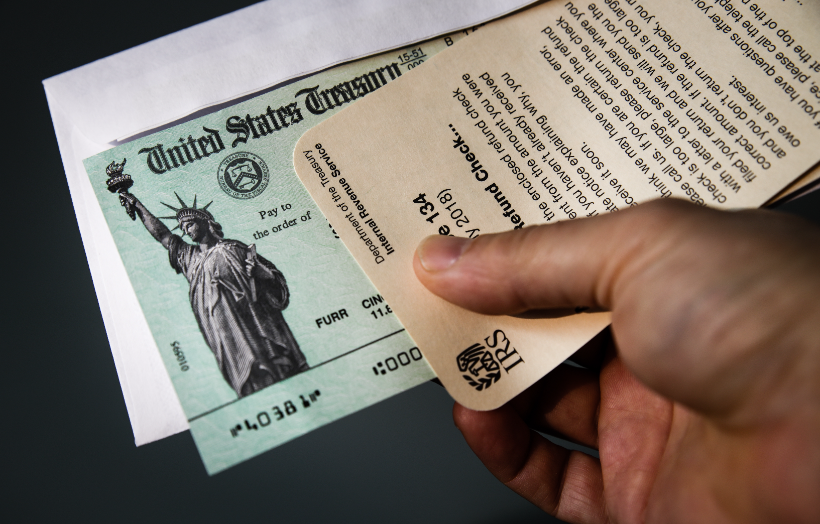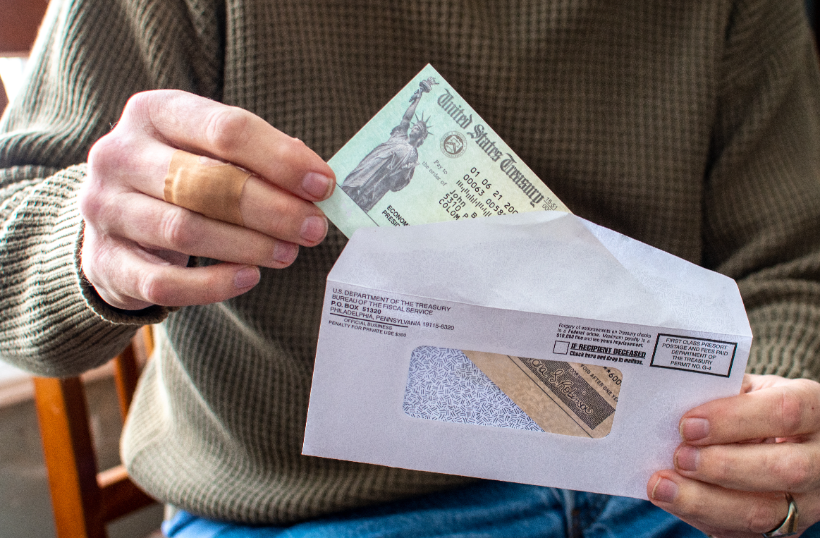$600 Coronavirus Stimulus Checks
Published:Information About New COVID Relief Payments in 2021
The COVID-Related Tax Relief Act of 2020 was signed into law by President Donald Trump on December 27, 2020. This is the second major stimulus package passed by the federal government that’s aimed at helping Americans who are struggling with the impact of the COVID-19 pandemic. The first stimulus package was the Coronavirus Aid, Relief, and Economic Security Act (also called the CARES Act), which was signed into law by President Trump on March 27, 2020.
The latest stimulus bill extends a number of programs that were created/enhanced by the original CARES Act. It also includes another round of stimulus payments for individuals, more weekly unemployment benefits for jobless Americans, and additional funding for the Paycheck Protection Program (PPP) for small businesses.
Here’s what you should know about the second round of stimulus checks (also referred to as Economic Impact Payments, EIP) and what to expect when it comes to your next government relief payment.
The Second Round of Stimulus Checks Are Being Delivered
The IRS and the Treasury Department started delivering the new round of stimulus payments on Tuesday evening of December 29, 2020. The first people to receive their stimulus checks have been individuals who have their Direct Deposit bank account set up with the IRS.
The IRS is also getting ready to mail paper checks to those who do not have Direct Deposit; they are preparing to mail these payments on January 6, 2021. If you are expecting to get your stimulus check in the mail, you will likely need to wait a bit longer to receive the money than those who use the Direct Deposit option.
If you are still waiting to get your stimulus payment – either the first $1,200 check, the second $600 check, or even both stimulus checks – the IRS is asking people to wait until January 15, 2021 before taking action because that is the last day the IRS has to finish processing payments.
RELATED: Second Stimulus Checks: When, How, and How Much?
Check the Status of Your Stimulus Payments
If you want to check the status of your Coronavirus-relief payment, you can use the IRS online tool called “Get My Payment.”
The “Get My Payment” web system will help to confirm the following status updates:
- That the IRS sent your second Economic Impact Payment (EIP), also known as a stimulus payment/check
- That the IRS sent your first stimulus payment. [Note that some people received their first stimulus check in partial payments. If you received partial payments, the “Get My Payment” portal will show only the most recent payment.]
- Your payment type – either Direct Deposit or by mail
The “Get My Payment” database is updated every 24 hours, typically overnight. Therefore, it is not necessary to check your payment status more than once a day.
The IRS also requests that individuals refrain from calling in about the status of their second stimulus check, since the phone operators do not have access to any data beyond what is currently online.
>> Check the Status of Your COVID-19 Stimulus Money
In order to use the “Get My Payment” tool, you will need to provide the following information:
- Your Social Security Number (SSN) or Individual Tax ID Number (ITIN)
- Your date of birth
- Your street address
- Your ZIP or Postal Code (a 5-digit number)
After you enter the above information, click on the blue “CONTINUE” button and you will be taken to a webpage that displays your personal stimulus check statuses for Payment #1 and Payment #2.
Do You Qualify for a Second Stimulus Check ($600)?
Your eligibility for the $600 stimulus payment is based on your Adjusted Gross Income (AGI) from your 2019 federal income tax return. In order to qualify for the full amount of the second stimulus check, your AGI must be $75,000 or lower for individuals. For married couples who file their taxes jointly, your combined AGI must be $150,000 or lower. For heads of household, your AGI must be $112,500 or lower in order to receive the full $600 stimulus check. Furthermore, if you have any eligible dependents (children under age 17), you may qualify for an additional $600 payment per qualified dependent.
If your 2019 AGI is higher than the applicable threshold mentioned above, the amount of your stimulus payment will be decreased (or “phased out”) by $5 for each $100 of income that exceeds the threshold. Individual filers with AGI more than $87,000 are not eligible for this second round of stimulus checks. A married couple that files jointly with AGI over $174,000 are also not eligible for this round of stimulus money.
Note that eligibility requirements for the second round of stimulus payments are slightly different from the first stimulus payments. The first round of stimulus checks were worth up to $1,200 per qualified individual.
For more information, see Coronavirus Stimulus Package & Government Funding Bill Signed Into Law (December 27, 2020).
Claim the Recovery Rebate Credit If You Don’t Get a Stimulus Payment
If, for some reason, you do not receive your stimulus check in the mail or by Direct Deposit, you can file for it on your 2020 income tax return (Form 1040 or Form 1040-SR). The new Recovery Rebate Credit is designed for people who didn’t get an Economic Impact Payment (EIP) for Coronavirus-related relief.
For more information about claiming this tax credit, see Recovery Rebate Credit Available for Those Who Didn’t Get Stimulus Checks.



